Types of Lays
The lays can be divided into three types on the basis of the number of layers of fabric.
- Single-ply -> As the name says it is made of single layer of fabric e.g. for making prototypes
- Multiple-ply -> A number of fabric layers are layed on the top of the other
- Stepped
lay -> Stepped lay is made up of fabric layers of different length
for example for garments of various sizes in different numbers.
Spreading Methods
There are different spreading methods being in practice
One Way
In this method, each layer is laid the same way up, with the grain/pattern running in the same direction. This is used usually for fabrics with grain or directional patterns. After laying each layer, the end has to be cut and in case the rollers are on the carriage, it has to return to its zero position i.e. beginning of the lay. The fabric faults during the spreading process can also be identified and rectified.
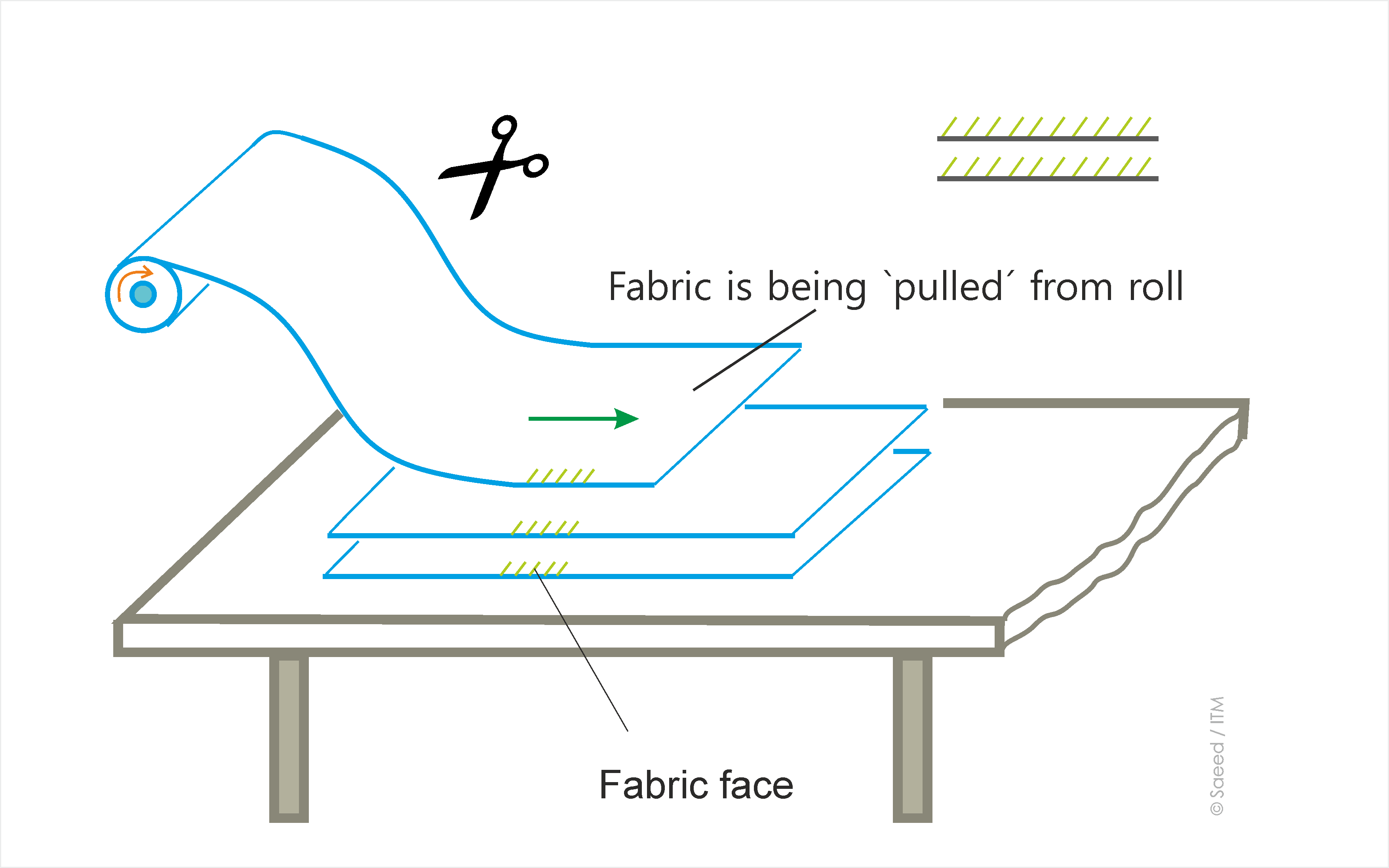
Single layer one way spreading
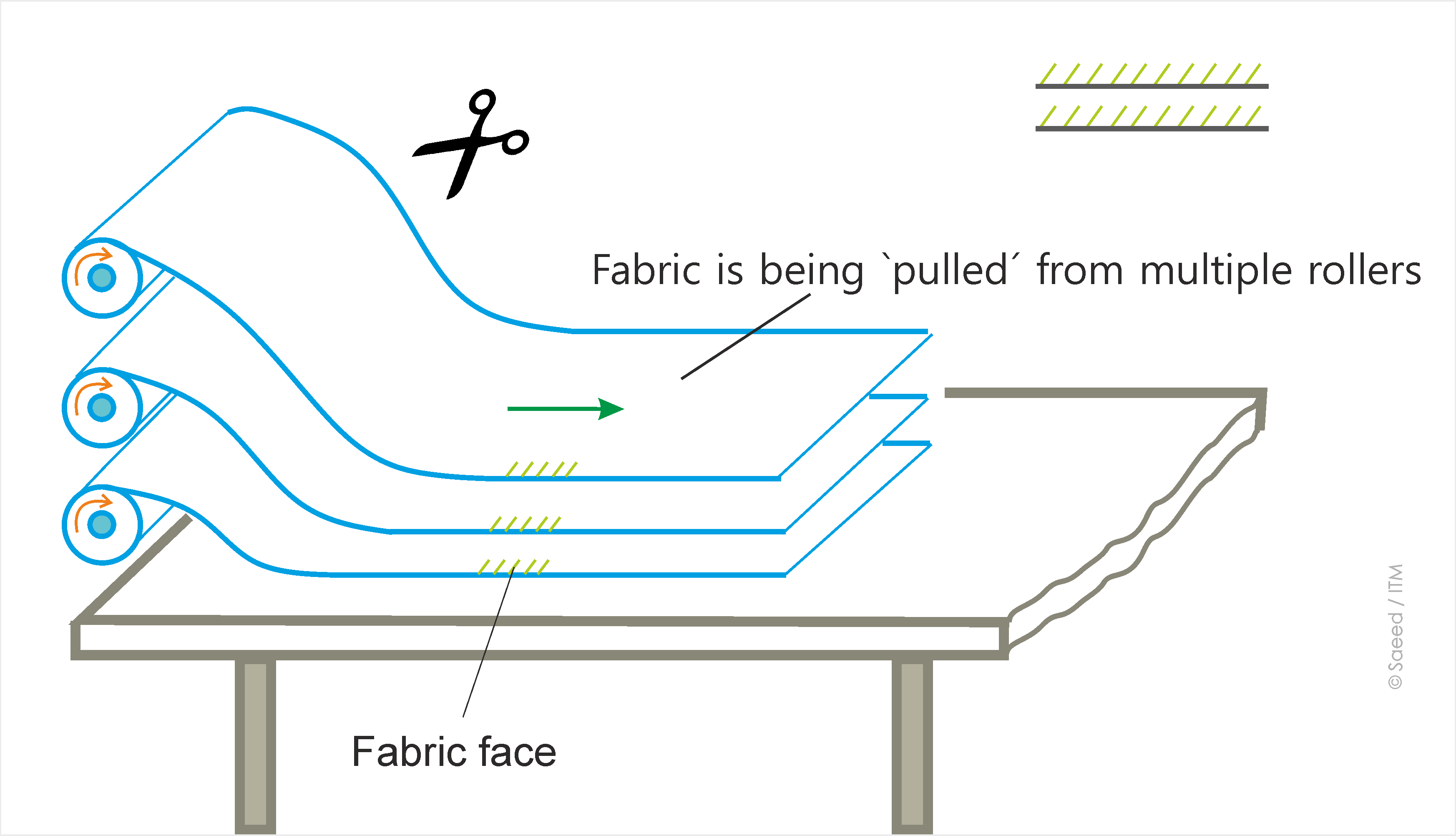
Multiple layer one way
Face to Face
The plies are laid in pairs i.e. Face to face. The grainline or the pattern follow the same direction. After laying the layers, the ends have to be cut and in case the rollers are on the carriage, they have to return to their zero position i.e. beginning of the lay. The fabric faults during the spreading process can be identified for top layer only, the bottom layer can not be checked.
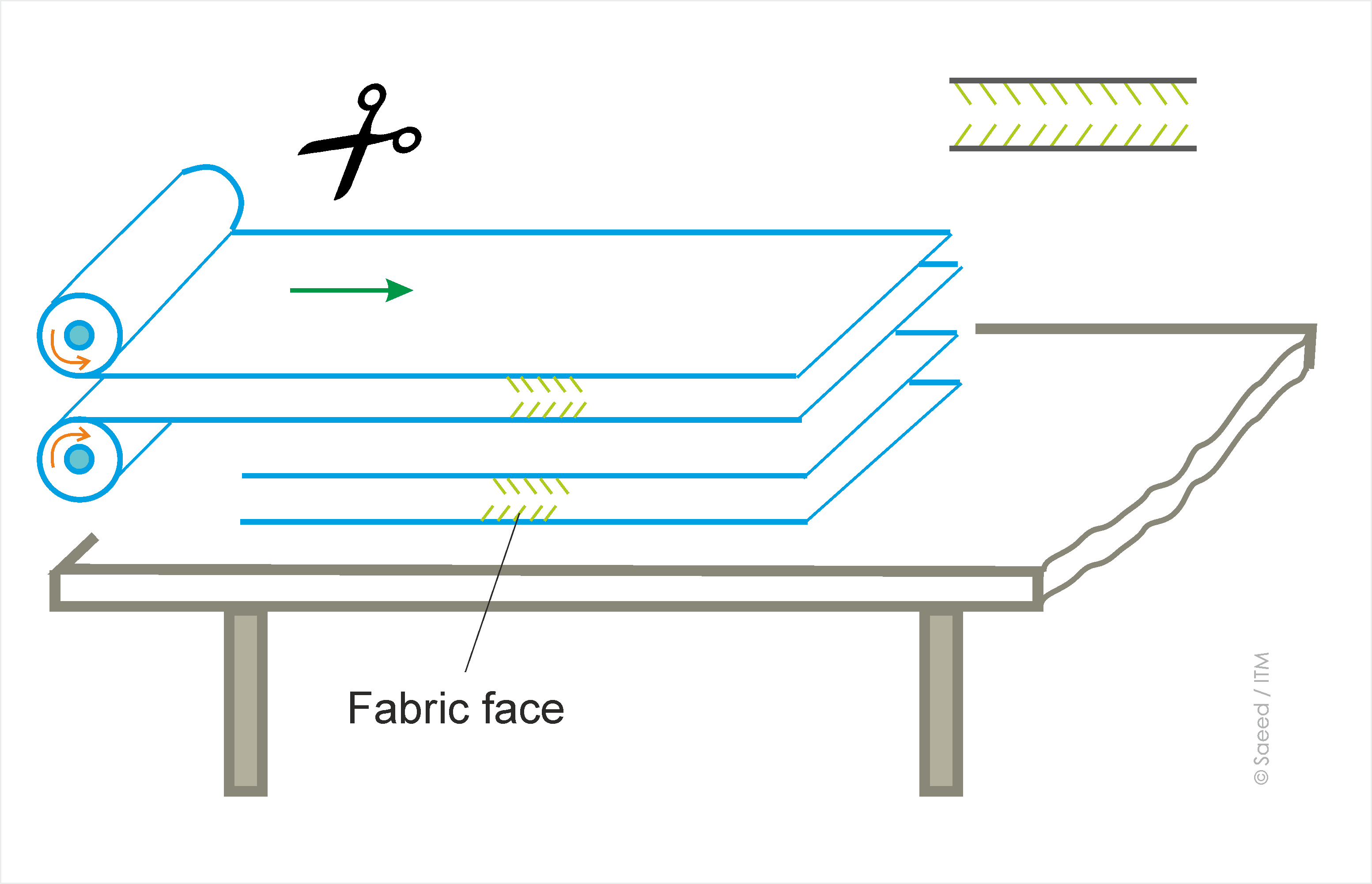
Face to Face
Two Way
The fabric plies are laid continuously from left to right and vice versa. The fabric layers are not cut at the ends and the process goes continuously. It is the fastest and efficient method of spreading, but it can not be used for all types of fabrics. It cannot be used for fabric with grain and directional patterns. The fabric faults can also
be not identified and rectified to at least one side of the fabric.
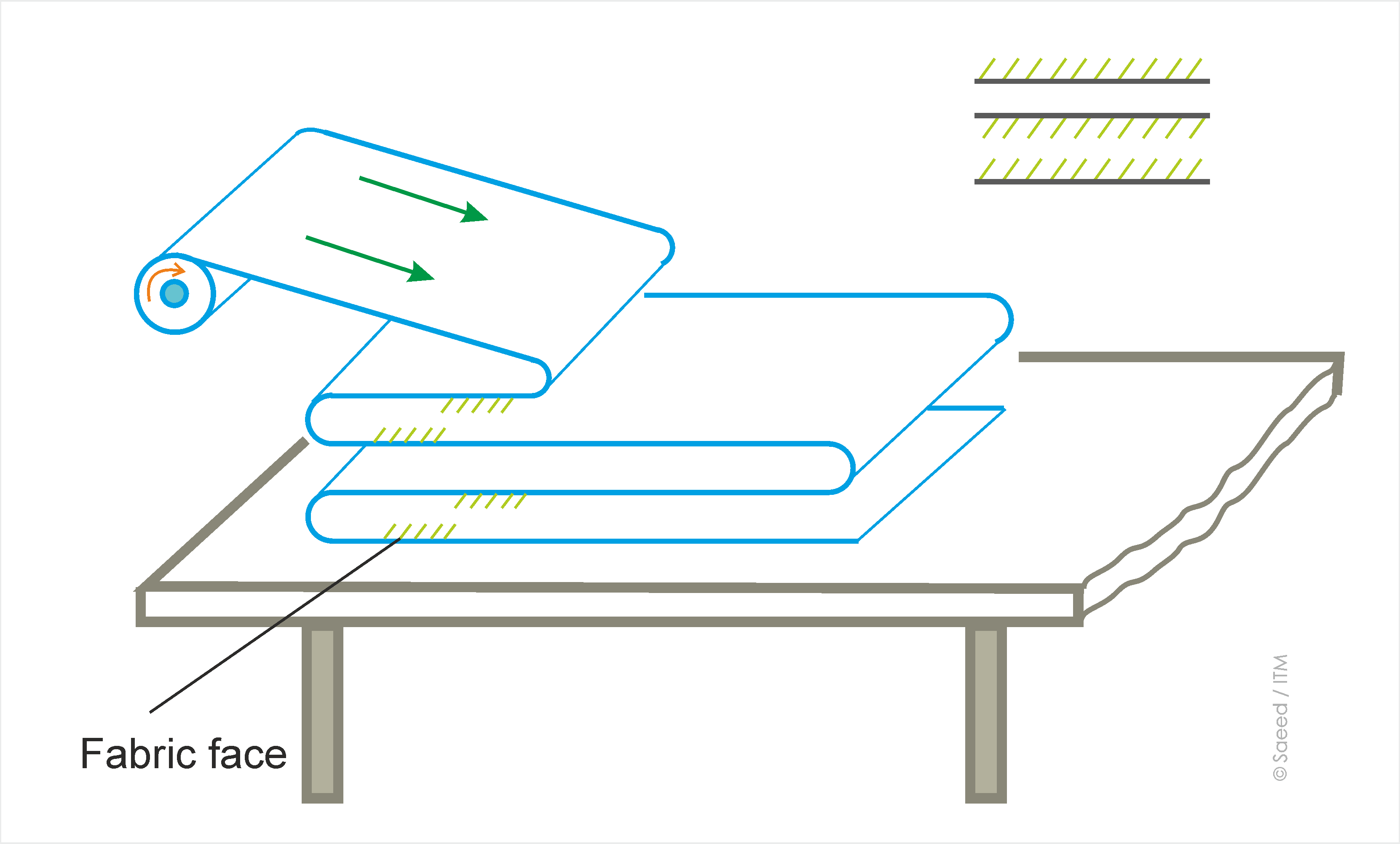
Two Way spreading
Methods based on Unrolling of fabric
Spreading methods can be divided into two types on the basis of unrolling methods used during spreading.
Pull Method
The fabric layers are pulled manually and the lay is spread to
the whole length. It requires usually access to fabric sides from both sides. It is the cheapest way of spreading and has a lot of drawbacks. Due to manual pulling the fabric is stretched especially when it is stretchable. Patterns will be later cut in stretched form and will later cause sizing problems when fabrics return to size after relaxation shrinkage.
Unwinding
The roll-off method is an appropriate and more gentle method to the fabric that is especially vulnerable to stretching. The fabric roller is unwound by the carrying belts. Tensioning devices are also further attached to spreading machines where fabric is relaxed before the fabric is laid over the spreading table.
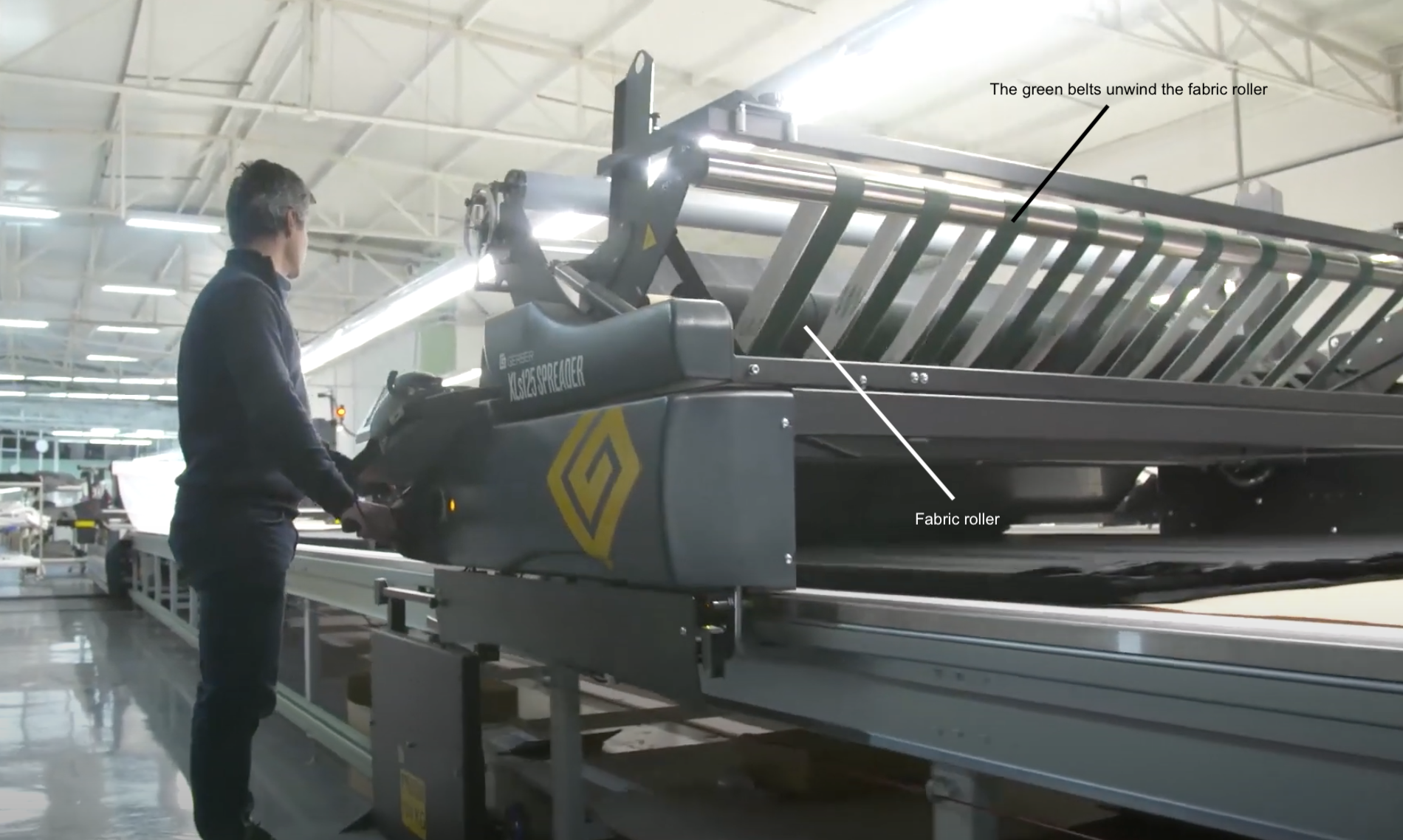
Fabric Roller on spreading machine [Gerber XLs 125 Spreader]
